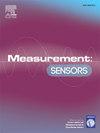Development and calibration of a measurement system for the characterization of avalanche photodiodes prospectively used as sensors in X-ray Compton polarimeters for space
Q4 Engineering
引用次数: 0
Abstract
Solar flares, dynamic eruptions of electromagnetic radiation from the Sun's surface, represent a potential risk for various human technological infrastructures. The CUbesat Solar Polarimeter (CUSP) project, part of the Alcor Program of the Italian Space Agency, aims to measure solar flare polarization in the hard X-ray band. This paper focuses on the design and setup of a measurement system to characterize the response of the avalanche photodiodes (APD) used in the CUSP polarimeter. The system is tested at room temperature conditions by varying both incident photon energy between 20 keV and 135 keV, using X-ray sources as references, and APD bias voltage from 260 V to 410 V. Using the calibrated system, the dependence of APD gain on bias voltage, and its energy resolution, are measured, matching the metrological standards of the polarimeter.
用于雪崩光电二极管特性的测量系统的开发和校准,该测量系统有望用作空间x射线康普顿偏振计的传感器
太阳耀斑是太阳表面电磁辐射的动态爆发,对各种人类技术基础设施构成潜在风险。立方体太阳偏振计(CUSP)项目是意大利航天局Alcor计划的一部分,旨在测量太阳耀斑在硬x射线波段的偏振。本文重点介绍了用于CUSP偏振计的雪崩光电二极管(APD)响应特性测量系统的设计和建立。在室温条件下,以x射线源为参考,将入射光子能量在20 ~ 135 keV之间变化,APD偏置电压在260 ~ 410 V之间,对系统进行了测试。利用校准后的系统,测量了APD增益对偏置电压的依赖关系及其能量分辨率,符合偏振计的计量标准。
本文章由计算机程序翻译,如有差异,请以英文原文为准。
求助全文
约1分钟内获得全文
求助全文
来源期刊

Measurement Sensors
Engineering-Industrial and Manufacturing Engineering
CiteScore
3.10
自引率
0.00%
发文量
184
审稿时长
56 days
 求助内容:
求助内容: 应助结果提醒方式:
应助结果提醒方式:


